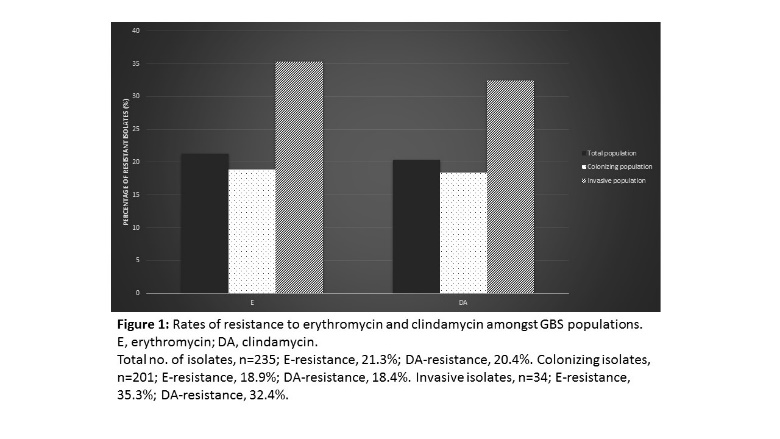
Katherine Hayes
Cork Institute of Technology, Ireland
Title: Macrolide and lincosamide resistance amongst Group B Streptococci – a growing concern?
Biography
Biography: Katherine Hayes
Abstract
Group B Streptococcus (GBS) is the leading cause of invasive neonatal disease worldwide, with fatality rates of up to 10%. It colonizes the genitourinary tract of approximately 30% of pregnant women and in recent years it has become a growing concern amongst non-pregnant adults. Penicillin remains the first line of treatment for GBS infections, however there have been reports of reduced sensitivity in some countries. Clindamycin and erythromycin are used in cases of beta-lactam allergy, with rates of resistance to these antibiotics continuing to rise. This study aimed to investigate the incidence of antimicrobial resistance in a clinical population of GBS isolates (n=235). Antimicrobial susceptibility testing was performed according to EUCAST guidelines and the underlying mechanism of resistance was determined, both phenotypically and genotypically. Isolates were further characterized based on their serotype using molecular methods and the prevalence of the hyper-virulent ST-17 clone was investigated. Resistance to erythromycin and clindamycin was observed in 21.3% and 20.4% of the total population respectively. The c-MLSB phenotype was the most common, detected in 62% of isolates, followed by i-MLSB (20%) and M (18%) phenotypes. The rare L phenotype was also confirmed in the clinical population. ErmB was the predominant genetic determinant, identified in 84% of isolates. Both mefA/E and ermTR were each present in 18% of the isolates. Molecular serotyping analysis revealed capsular types Ia, III and II were the most common serotypes (28.1%, 24.7% and 14% respectively). Evidence of capsular switching was observed in one GBS isolate, which has implications for vaccines that target the capsular polysaccharide. This work highlights emerging trends in antimicrobial resistance amongst the Irish GBS population and emphasizes the need for continued monitoring of antibiotic resistance and serotype distribution in the population.

Recent Publications
1. Hawkins PA, et al. (2017) Cross-resistance to lincosamides, streptogramins A and pleuromutilins in Streptococcus agalactiae isolates from the USA. Journal of Antimicrobial Chemotherapy 5: 4544.
2. Arana DM, et al. (2014) First clinical isolate in Europe of clindamycin-resistant group B Streptococcus mediated by the lnu(B) gene. Revista española de quimioterapia: publicacioÌn oficial de la Sociedad Española de Quimioterapia 27: 106–9.
3. Lamagni TL, et al. (2013) Emerging trends in the epidemiology of invasive group B streptococcal disease in England and Wales, 1991-2010. Clinical infectious diseases 57: 682–688.
4. Malbruny B, et al. (2011) Cross-resistance to lincosamides, streptogramins A, and pleuromutilins due to the lsa(C) gene in Streptococcus agalactiae UCN70. Antimicrobial Agents and Chemotherapy 55: 1470–4.
5. Kimura K, et al. (2008) First Molecular Characterization of Group B Streptococci with Reduced Penicillin Susceptibility. Antimicrobial Agents and Chemotherapy 52: 2890–2897.

